data structures
1/98
There's no tags or description
Looks like no tags are added yet.
Name | Mastery | Learn | Test | Matching | Spaced |
|---|
No study sessions yet.
99 Terms
binary tree
a type of list where each node has up to two children (left and right child)

leaf
a tree node with no children
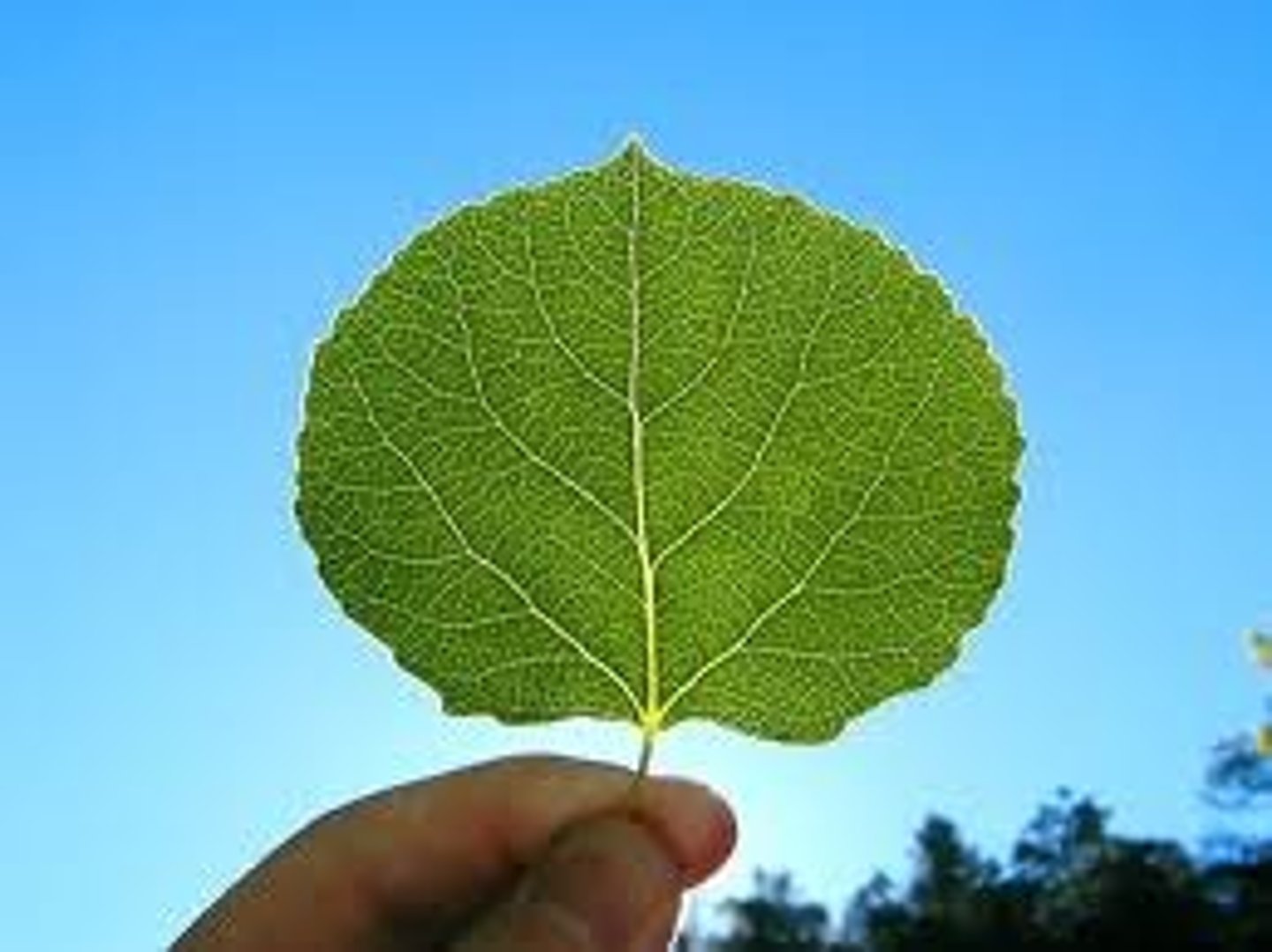
internal node
a tree node with at least one child
parent
a tree node that has a child node
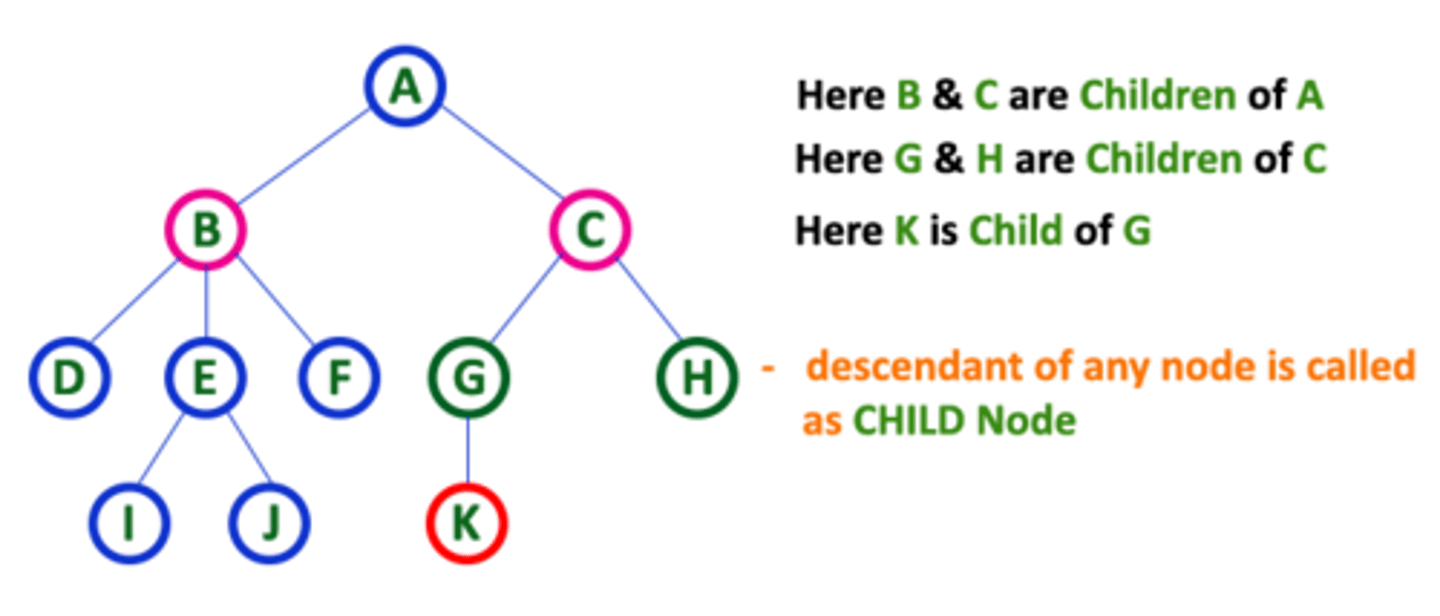
ancestors
a tree node's parent and their parent and so on, until the root node is reached
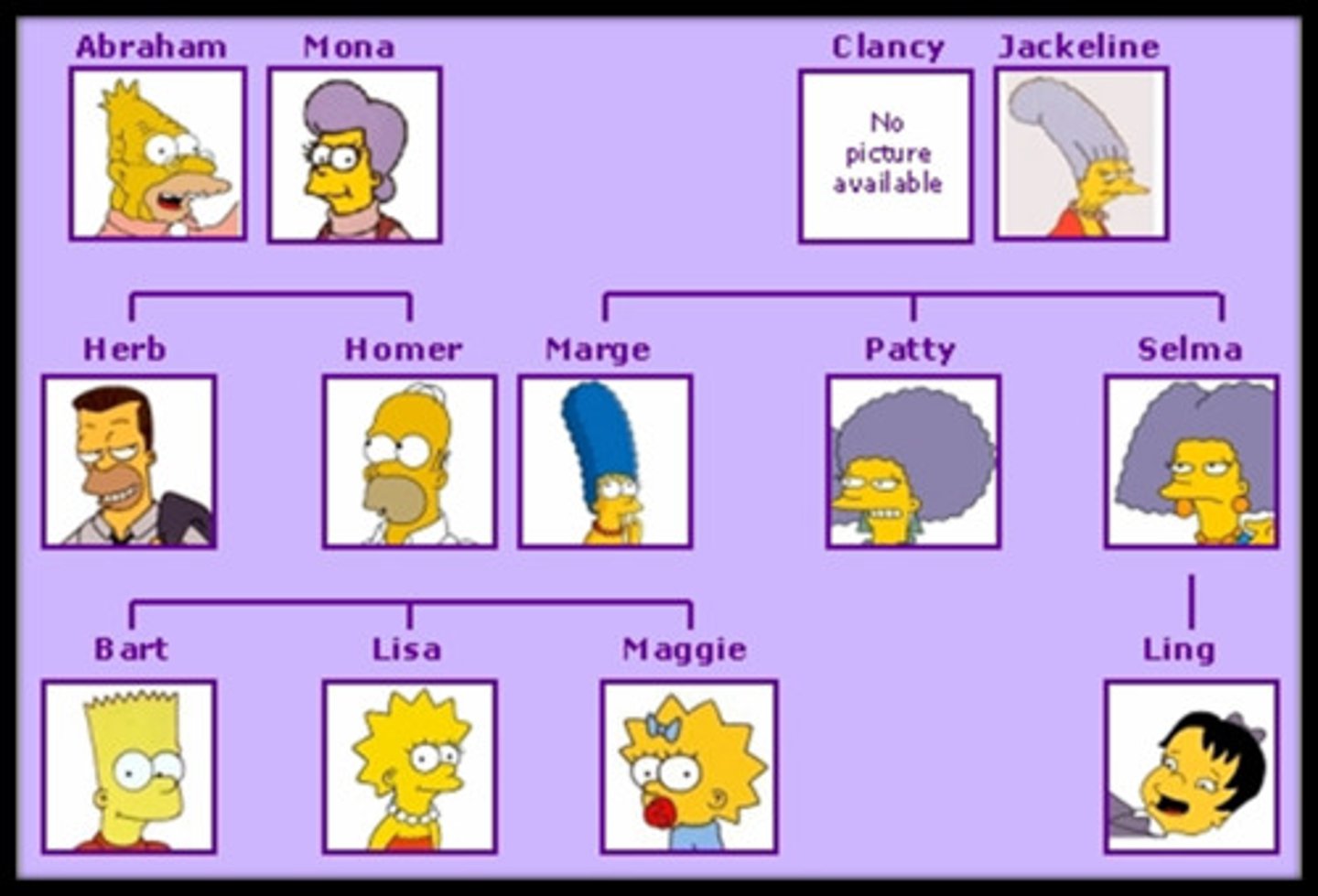
root
a tree node with no parent (top node)
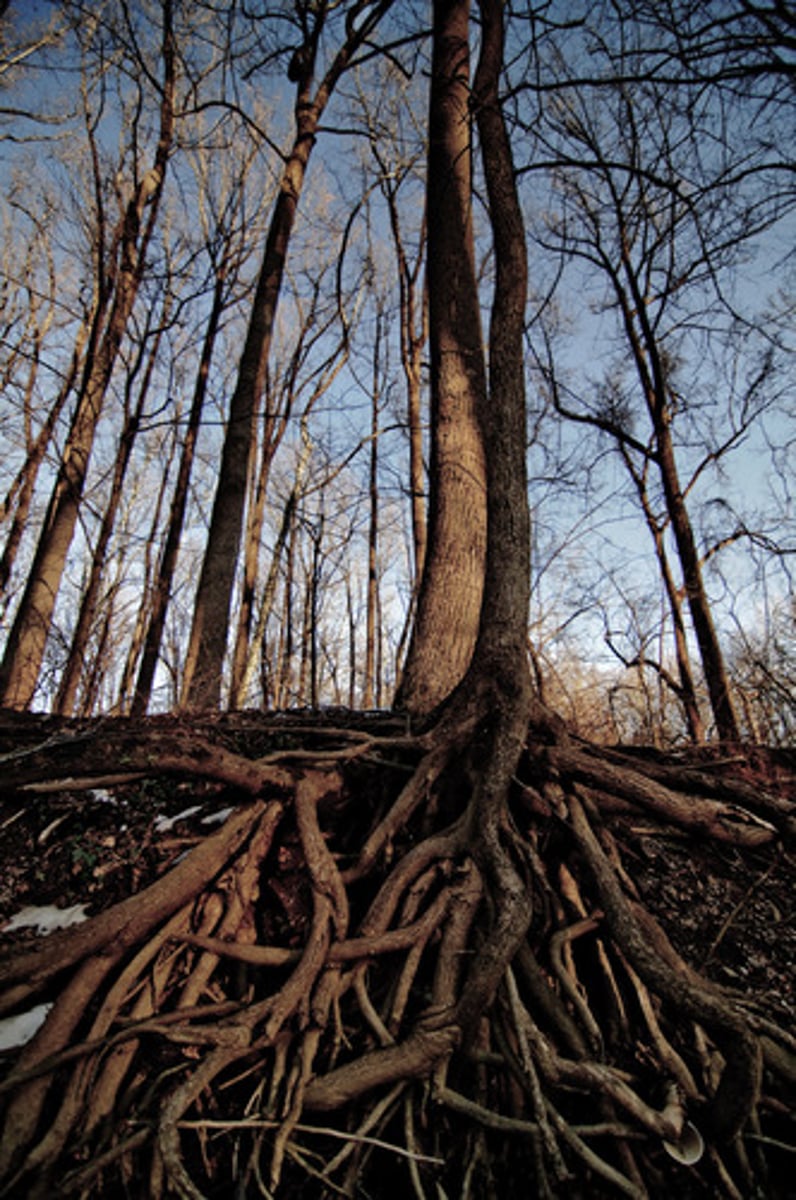
when considering internal nodes what is also included
the root node is included b/c it has children

edge
the link from a node to it's child
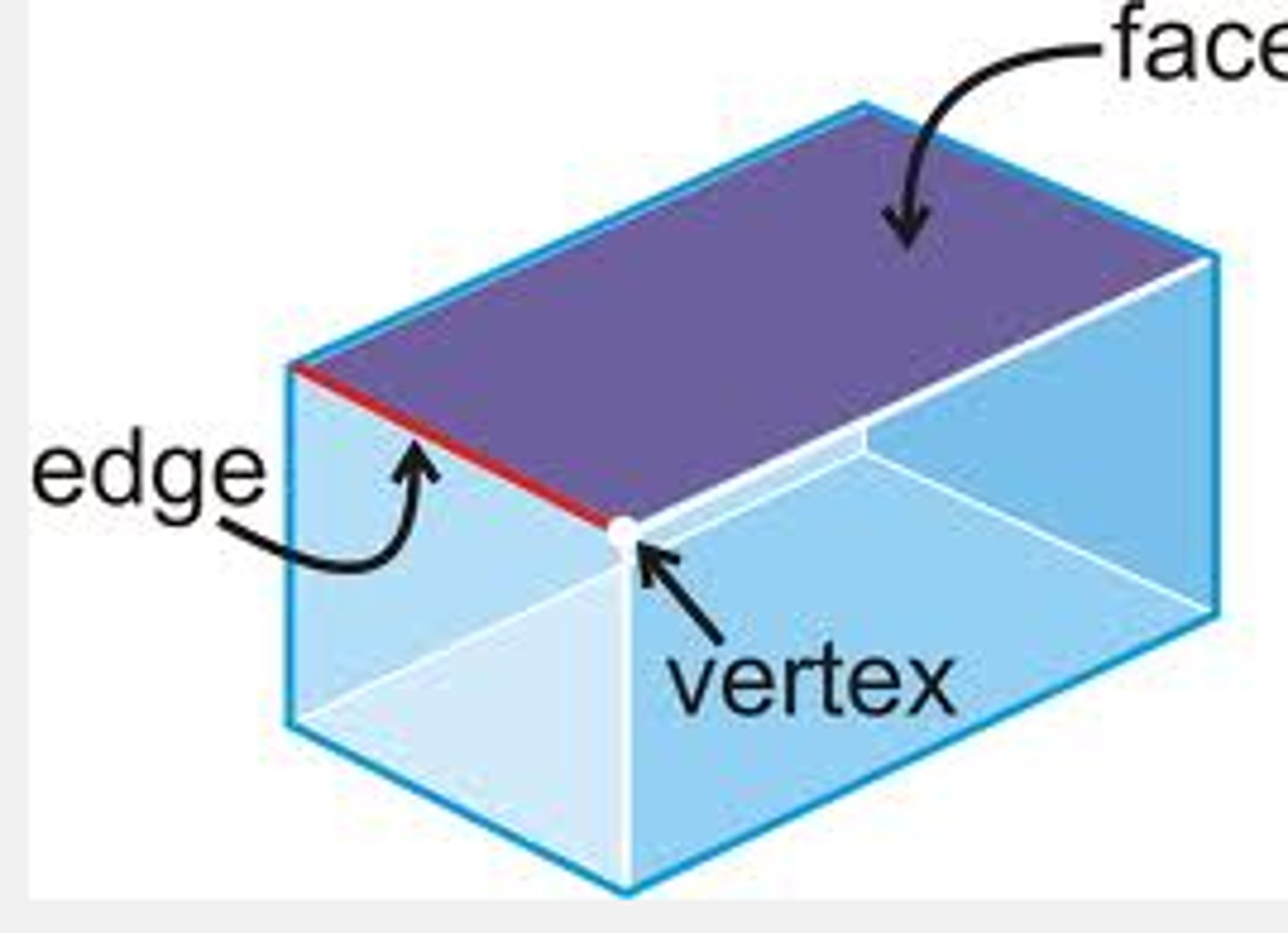
depth
the number of edges from the root node to a specified node
what will the depth of the root always be
zero
level
any nodes at the same depth on a tree
Height
the largest depth of the tree
full
a binary tree where every node has either zero or two children
complete
a binary tree where all the levels, with the exception of the last are full. the last level can be either full or have all of it's node be as far left as possible
what can a tree be used to represent
it can represent hierarchical data like files and directories in file systems
Binary Search Tree (BST)
a form of a binary tree that has an ordering property where any node's left subtree key is less than or equal to the node's key and vice versa for the right subtree
what is the runtime of a BST search
the worst case comparison is H+1 with a big-O notation of O(H), where H is the tree's height, this results in a tree with a runtime of O(log (base 2) N) where N is the number of nodes, however this will only be true when all but the last levels are full
successor node
node that will come after the current node based on the ordering property (smallest to largest
predecessor node
node that will be the node before the current node based on the ordering property (smallest to largest)
in a BST what is the successor node
the successor node is the current node's right subtree's leftmost child but if there is no right subtree then the successor is the first ancestor that has the current node as a part of the left subtree
in a BST what is the predecessor node
the predecessor node is the current node's left subtree's rightmost child but if there is no left subtree then the first ancestor of the current node is the predecessor (parent node)
what will the BST search algorithm return if it does not find a match
returns null
insert as a left child
if the new node is less than the current node and the current node's left child is null, then the current node's left child is set to the new node
insert as a right child
if the new node is greater than the current node and the current node's right child is null, assign the new node as the current node's right child
what is the complexity of the BST insert and remove algorithms
insertion for BST will visit one node per level with log(base 2) N levels to N levels, the best-case is O(log N) and the worst case is O(N). the space complexity is O(1)
how does a removal with BST work
the first matching node will be removed and the BST will be restructured based on the ordering property. how the tree is restructured depends on where the node is in the tree, if there is no match then null is returned
removal of a leaf node
if the found node has a parent then the subtree containing the found node is set to null, if the node was also the root then the root is null and the BST is empty
removal of an internal node with one child
if the found node has a parent, the subtree for the found node is assigned to the found node's child, if the found node is the root, the root is set to the child
removal of an internal node with two children
first locate the found node's leftmost child of it's right subtree, this will be the successor node, copy the successor node to the found node's location and recursively remove the successor node from it's original node
Tree traversal
a traversal algorithm that travels every node in a tree and preforms an operation on each node
inorder traversal
traverses the nodes from smallest to largest
how is the height of a binary tree found when it has a maximum N nodes
find the height with h = N - 1
for a BST how should the height be found
an empty subtree/nod is null and will return -1, using recursion, count the height of both the left and right subtree, then add 1 to the greater height to get the tree's height
what does each node in a BST implementation include
generally, a parent pointer so that a traversal can go down the tree and then back up to easily find a node's ancestors and siblings
what must be passed to a BST search algorithm that uses recursion
a single node and the search key
what is the first base case for a BST recursive search algorithm
if the node is null, the case will return null. If it is not null then the search key is compared to the node's key
what is the second base case for a BST recursive search algorithm
if the search key matches the node's key then the node is returned. if the search key is less than the node's key the left child is recursively called. if the search key is greater than the node's key, then the right child is recursively called
what algorithm is called if the BST nodes do not use parent pointers
BSTGetParent
how does BSTGetParentAlgorithm work
a recursive search is used to find the parent node by comparing a candidate node's child pointer to the search key.
can inserting and removing BST nodes use recursion
yes recursion can be used to traverse the tree until the appropriate node is found and the need operation carried out
Max-Heap
a binary (or any kind of tree) tree that maintains the property that requires a node's key is greater than of equal to it's children's keys
what does a max-heap ensure
it ensures that the tree's maximum key will always be the root key
percolating
any upward movement of a node in a max-heap
what is done to insert into a max-heap
insert at the heaps last level and then swapped with other nodes until it has a parent with a higher key. Note: last level should be fill from left to right and needs to be completely full before beginning a new level
what is done to remove from a max-heap
replace the root node with the last level's last (rightmost) node. then swap the replaced node down until it's parent is greater and it's children are less that it. Note: Always remove at the root node
min-heap
a type of tree where a node's key must always be less than or equal to it's children. Similar to max-heap
web server
a computer that provides web pages in response to internet requests
cache
copies of popular pages on a small fast drive
how are heaps usually stored
with arrays where the root node is at index zero, the left child at index 1, the right child at index 2, and so on
how are heaps stored
by traversing the tree's levels from left to right and starting at the top and then moving down by level
how are nodes traversed
traversal requires that nodes be referred to by their indices b/c heaps do not implement with node structure or parent/child indices
what is the formula to find a parent index
floor(( i - 1) / 2), where floor indicates to round down and i is the node's index
what are the formulas to find the child indices
left: 2(i) + 1, right: 2(i) + 2, where i is the node's index, always check to see if the children exist
heapsort
a sorting algorithm that takes advantage of a max-heap's properties by repeatedly removing the max and building a sorted array in reverse order
heapify
an operation used to turn an array into a heap, array must be in sorted order
how does heapify work
will start on the internal node with the largest index and will continue down to the root node (index 0). the largest internal node is found using floor(N/2) - 1, Note: leaf nodes are not checked with percolated down even if they are on different levels
will a sorted array make a valid max-heap
no a sorted array will not necessarily make a valid max-heap
what is heapsort runtime
worst-case runtime is O(N log N)
what is MaxHeapPercolateDown runtime
worst-case runtime is O(log N)
how many loops are used by heapsort
two loops are used
what does the first loop in a heapsort do
the first will heapify the array with MaxHeapPercolateDown, iterates (N/2) - 1 times
what does the second loop in a heapsort do
the second will remove the max value and store it at the end index, and then decrement down by one, iterates the arrayLength - 1 times
how is the number of iterations for a MaxHeapPercolateDown found
the first loop is found with (N/2) - 1, the second loop is found with arrayLength - 1, find the total number of iterations by adding the first loop plus one to the second loop
Priority Queue
a queue where every item has a priority with items that have a higher priority being closer to the front than ones with a lower priority
how does the push operation work with priority queue
inserts an item so that it is in front of the items with a lower priority
how does the pop operation work with priority queue
removes and returns the items with the highest priority, should be the first item
Push(PQueue, x)
inserts x after all equal or higher priority items
Pop(PQueue)
returns and removes the item at the front of the PQueue
Peek(PQueue)
returns but does not remove the item at the front of PQueue
IsEmpty(PQueue)
returns true if PQueue has no items
GetLength(PQueue)
returns the number of items in PQueue
PushWithPriority
special push operation where an item's priority is included as part of the call statement and will reside outside of the item itself
can a priority queue be implemented so that an item's priority does not have to be given
yes the priority queue can be implemented to determine an item's priority on its own
how do heaps work when implemented with a priority queue
the root node will have the highest priority.
what priority queue operations implemented with heaps have a worst case runtime complexity of O(log N)
push and pop operation
what priority queue opertations implemented with heaps have a worst case runtime complexity of O(1)
peek, isEmpty, and getLength operations
treap
a type of heap that uses a main key to maintain the BST ordering property along with a second, randomly generated key that maintains the heap property during insertions
what kind of tree does a treap usually produce and maintain
a balanced tree.
what are the basic treap algorithms
search, insert, and delete
what does the treap insert algorithms use to move a node
rotation is used to move the node after it has been inserted in order to maintain BST property. the original insert location is based on the main key and it's final location is found by percolating up with the heap property
how does the delete operation for a treap remove a node
the node is removed by resetting the node's priority (based on the kind of heap), percolating down with rotation until the node is a leaf to removing
what is the first way to delete in a treap
the first is to use a BST delete followed by a percolate down until the heap property is not violated
what is the second way to delete in a treap
the second way is to reset the node's priority key to a value based on the kind of heap (-infinity for max-heap), percolate down and delete the node once it becomes a leaf node, the percolation down is down with rotation so that the higher priority child is rotated up
which way is the considered better for treap delete
the second way is considered the better method
AVL Tree
a BST with a height balance property and a specific operations that will rebalance the tree when a node is inserted or removed
Height Balanced
for any node, the height of the subtrees is only different by zero or one
Balance Factor
for an AVL tree, when a nod's left subtree and right subtree heights are subtracted and equal to 1, 0, or -1. a non-existent subtree has a height of -1
does an AVL tree maintain minimum tree height
no it does not ensure that minimum tree height but it is more efficient for insertions and removals b/c it requires only a few rotations when rearranging
how is an AVL tree height found
AVL tree height is found with O(log N)
how is the maximum SVL tree height found
the maximum height of an AVL tree is 1.5 times the minimum height
what is a special ability of an AVL tree
it has the ability for each node to store the height of the subtree as a member. when an operation is preformed it may require for a node's ancestors to have their height rebalanced
rotation
a local rearrangement of a BST that will maintain the ordering property while rebalancing the tree
how happens for a right rotation with an existing right child
that child will become the left child of the rotated node (node moved into the right subtree) to maintain the BST ordering property. left rotation will be symmetrical.
what is requirement of a right rotation algorithm
requires that a subtree root must have a left child b.c the child pointers must be able to be reassigned
when should an ABL tree be rebalanced
if at any point where the balance factor is not 1, 0, or -1, generally occurs after insertions or removals and is preformed with rotations that will maintain BST ordering property
how many rotations does inserting inside of a subtree require
this will require a double rotation
what are the four imbalance cases
left-left, right-right, left-right, and right-left
what nodes will need to have their balance factors rebalanced when a node is inserted
only the nodes that are on the ascending path from the inserted node to the root
what are two methods to update a balance factor
recalculating the balance factor or having it stored as a data member and incremented by one when it is on the path from the new node to the root. the second method will increment plus on if ascending from the left child and minus one from the right child